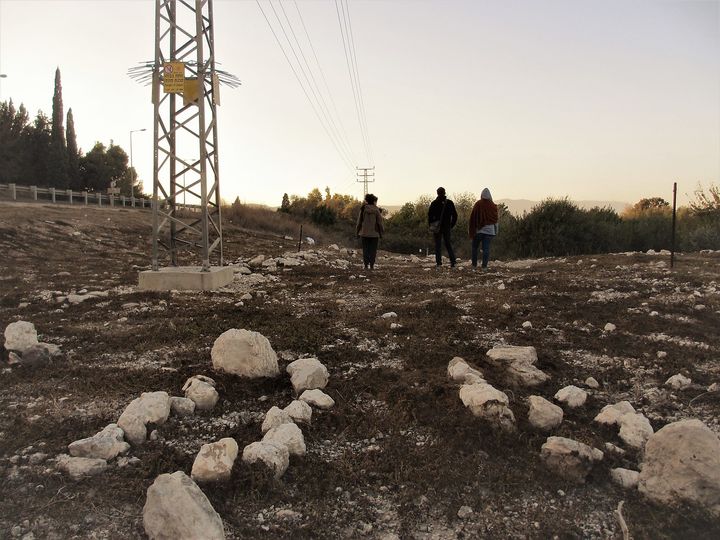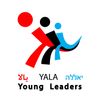
I never imagined that heading out on a sunny Saturday for a day trip in northern Israel would end on the ruins of my friend’s village, behind a shabby “Paz” gas station in the middle of nowhere near a small village called Hayogev.
It was a sunny autumn weekend when we decided to travel to the north. Birgitte, a tall blond Danish girl with a huge smile and a ringing laughter, Rebekah, a young and idealist farmer from Puerto Rico with the brightest eyes, myself the Israeli and Hasan, a young Palestinian living in Jordan, whose kindness and charm are felt with his calming presence. They were my classmates at the Arava Institute for Environmental Studies, and I wanted to share with them my childhood home, the place where I grew up.
We had a great Shabbat evening with my family. I made pasta for everyone and my dad kept pouring wine into our glasses, making sure the alcohol and laughter levels kept on rising. The day after, we were discussing where to go. I thought of the beautiful Upper Galilee with its many springs, hills and vineyards. But as I was consulting with my friends, Hasan had his own idea.
“Hey Zohar, maybe you know where Marj Ibn Amer is?”
I have never heard of this place, or even this name. He said that it was a valley, to his knowledge located somewhere in the north of Israel, and maybe it’s close to where I wanted to take them. I asked him for more details, maybe there’s something else he knows, but he didn’t have much information.
I asked my parents, but no luck. So I tried to search online. One result suggested this is the Arabic name of Emek Yizrael, a big valley in the north of Israel, starting in the costal plane and ending in the Jordan Valley; this is where my parents grew up and my grandmother Nira still lives today at the age of 84. I widened my eyes with excitement to discover this new name for a place I knew very well and loved, and I asked Hasan why he was interested in this area. And then he told me about Mansi.
Mansi was a Palestinian village in Marj Ibn Amer, Emek Yizrael of today, and Hasan’s grandmother, Ayda, lived there until 1948. After the war that took place that year between Israel, the Arab nations and the Palestinians – she fled with her family (and many other Palestinians) and at the end reached Jordan, where she still lives today with Hassan, his parents and the rest of the family.
I was very touched by Hasan’s story. I felt impelled to find this place that was once their home. I continued searching online about Mansi and finally I found information in the website of “Zochrot”, an organization that documents information about pre – ’48 Palestine. I discovered that Mansi was a Palestinian village very close to where my family is from, in a region called “Ramot Menashe”… How similar the names were! We all agreed, forget the Galilee, let’s go find Mansi, or what’s left of it.
The four of us packed into my father’s Ford, Birgitte with her long legs in the front and Rebekah and Hasan at the back. As the sun started to set, we parked at a lone gas station where according to that website, we should find the place. We passed through the thick bushes and thorns, looking for a path or some sort of indication. There wasn’t any, but the website said to look for almond and fig trees which grew by a spring. As I was holding my smartphone in my hand we kept on searching, when all of a sudden I noticed a patch of trees. They looked rather old, as if they were growing there wild for a long time, but the tree top was evergreen. We paved our way through the vegetation and emerged into a clearing. About 50 meters from the gas station, in the middle of nowhere, we happened upon a graveyard. Old Graves made of small stones, no tombstones or any sort of identification.
Just rocks and the scars of time that left this place abandoned and silent.
And there we were, a young Jewish-Israeli woman and a young Jordanian-Palestinian man, standing in silence above graves of nameless people, while the sounds from the highway echoed to the barren field. Birgitte and Rebekah went to look for flowers while Hasan tried to call his grandmother in Jordan through skype. I could not get over,how surreal it was.
The girls came back with thin, white flowers and we placed them on the graves. We spent one last moment of silence at dusk. I was filled with sorrow for the circumstances that brought us together to this place, a refugee and a citizen of the same land.
All the way back to my parents’ house and later on to our beautiful sanctuary-campus in the Arava desert, I kept thinking of that moment. No politics stood between us, no anger or resentment. Just friendship, a sense of humanity and a fair amount of sadness. But I dare to say that maybe, just maybe – there was also a bit of hope. a hope for a chance that one day, after all walls are torn down and people live in freedom and peace, Hasan and I would be able to come back to this place where both of our families are from, remember that moment we shared long time ago, smile about it – and move on.
Photo credit: Birgitte Ringgaard Diget
